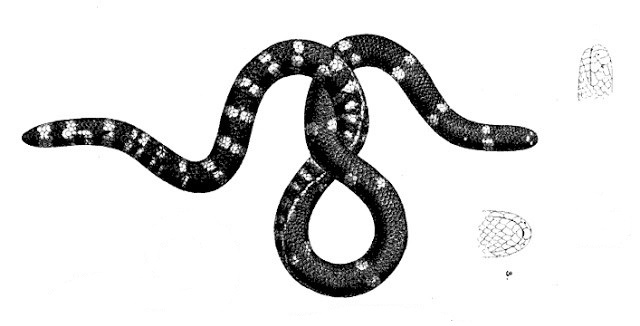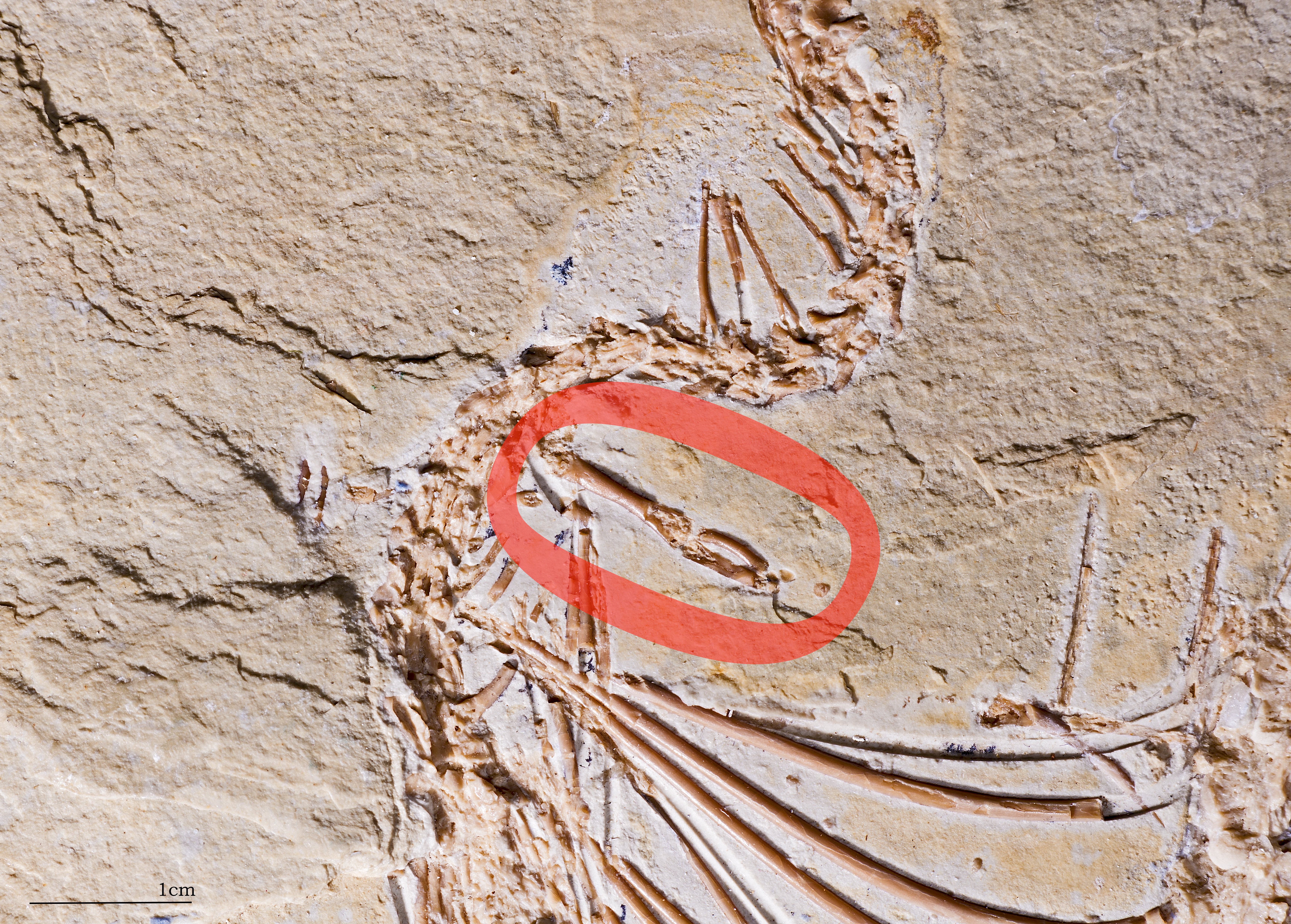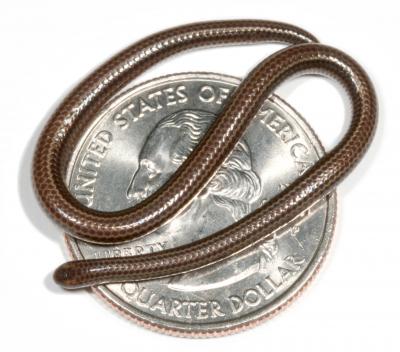|
Ophidia
__FORCETOC__ Ophidia (also known as Pan-Serpentes) is a group of squamate reptiles including modern snakes and reptiles more closely related to snakes than to other living groups of lizards. Ophidia was defined as the "most recent common ancestor of ''Pachyrhachis'' and Serpentes (modern snakes), and all its descendants" by Lee and Caldwell (1998: 1551). The clade name Ophidia derives from the Ancient Greek word (), meaning "small snake". Evolution Modern snakes are thought to have evolved from either burrowing or aquatic lizards during the mid-Cretaceous period, and the earliest known fossils date to around 112 Ma ago. However, the relationship between modern snake and more primitive snake ancestors, many of which retained hind limbs, is less clear. While many of these "stem-snakes" are known from Mesozoic fossils, some of them may be descendants of the earliest true snakes rather than more primitive lineages. Below is a cladogram modified from a study by Wilson ''et al.'' ... [...More Info...] [...Related Items...] OR: [Wikipedia] [Google] [Baidu] |
Madtsoiidae
Madtsoiidae is an extinct family of mostly Gondwanan snakes with a fossil record extending from early Cenomanian (Upper Cretaceous) to late Pleistocene strata located in South America, Africa, India, Australia and Southern Europe. Madtsoiidae include very primitive snakes, which like extant boas and pythons would likely dispatch their prey by constriction. Genera include some of the longest snakes known such as '' Vasuki'', measuring at least long, and the Australian '' Wonambi'' and '' Yurlunggur''. As a grouping of basal forms the composition and even the validity of Madtsoiidae is in a state of flux as new pertinent finds are described, with more recent evidence suggesting that it is paraphyletic as previously defined. Although madtsoiids persisted on Australia until the Pleistocene, they largely went extinct elsewhere during the Eocene. However, some species persisted in South America and India through the Oligocene. Description Madtsoiidae was first classified as a sub ... [...More Info...] [...Related Items...] OR: [Wikipedia] [Google] [Baidu] |
Eophis
''Eophis'' is an early genus of stem-snake (clade Ophidia) containing one species, ''Eophis underwoodi'', from the Middle Jurassic (Bathonian) from the Forest Marble Formation of United Kingdom. It is known from a fragmentary dentary from Kirtlington Quarry. It was previously interpreted as an anguimorph lizard. The placement of ''Eophis'' as a stem snake was re-affirmed by subsequent analyses. Phylogeny Cladogram A cladogram (from Greek language, Greek ''clados'' "branch" and ''gramma'' "character") is a diagram used in cladistics to show relations among organisms. A cladogram is not, however, an Phylogenetic tree, evolutionary tree because it does not s ... based in the phylogenetic analysis by Caldwell ''et al.'' (2015): See also References Ophidia Prehistoric reptile genera Middle Jurassic reptiles of Europe Fossil taxa described in 2015 {{paleo-reptile-stub ... [...More Info...] [...Related Items...] OR: [Wikipedia] [Google] [Baidu] |
Parviraptor
''Parviraptor'' is a genus of squamate containing one species, ''Parviraptor estesi'', from the Late Jurassic (Tithonian) or Early Cretaceous (Berriasian) Purbeck Limestone Formation of Dorset, England. A second species, ''Parviraptor gilmorei'', was described from the Late Jurassic Morrison Formation of Western North America;Foster, J. (2007). "Table 2.1: Fossil Vertebrates of the Morrison Formation." ''Jurassic West: The Dinosaurs of the Morrison Formation and Their World''. Indiana University Press. pp. 58–59. it was present in stratigraphic zone 4.Foster, J. (2007). "''Enneabatrachus hechti''" ''Jurassic West: The Dinosaurs of the Morrison Formation and Their World''. Indiana University Press. p. 137. However, the second species was subsequently transferred to a separate genus '' Diablophis''. An indeterminate species is known from the Bathonian aged Kirtlington Mammal Bed (Kilmaluag Formation, Scotland). Description The shape, length, and body form of ''Parviraptor'' is ... [...More Info...] [...Related Items...] OR: [Wikipedia] [Google] [Baidu] |
Najash
''Najash'' is an extinct genus of basal snake from the Late Cretaceous Candeleros Formation of Patagonia. Like a number of other Cretaceous and living snakes it retained hindlimbs, but ''Najash'' is unusual in having well-developed legs that extend outside the rib cage, and a pelvis connected to the spine. Discovery and description Fossils of ''Najash'' were found in the terrestrial Candeleros Formation, in Rio Negro Province, Argentina, and date to roughly 90 million years ago. The skull and spine of ''Najash'' show primitive features that resemble other Cretaceous snakes, such as ''Dinilysia patagonica'' and Madtsoiidae. Also, several characteristics of the neck and tail of ''Najash'' and '' Dinilysia patagonica'' show how the body plan of snakes evolved from a lizard-like ancestor. ''Najash'' had not lost its sacrum, the pelvic bone composed of several fused vertebrae, nor its pelvic girdle, which are absent in modern snakes, and in all other known fossil snakes as wel ... [...More Info...] [...Related Items...] OR: [Wikipedia] [Google] [Baidu] |
Lapparentophiidae
Lapparentophiidae (meaning " Lapparent's snakes") are an extinct family of basal terrestrial ophidians known from Early-Late Cretaceous (?Albian-Cenomanian)-aged fossil remains discovered in Algeria, France, Morocco and Sudan. Two genera are known: the type species, ''Lapparentophis'' and the poorly represented genus ''Pouitella''.Rage, J-C. (1988). A primitive snake in the Cenomanian. n French''C. R. Acad. Sci. Paris, Sér. II.'' 307, 1027-1032 They were initially believed to have been snakes, but later studied have found Lapparentophiidae to fall under Ophidia, the clade which Serpentes also belongs to. References {{Taxonbar, from= Q108427342 † A dagger, obelisk, or obelus is a typographical mark that usually indicates a footnote if an asterisk has already been used. The symbol is also used to indicate death (of people) or extinction (of species or languages). It is one of the mo ... Albian first appearances Ophidia ... [...More Info...] [...Related Items...] OR: [Wikipedia] [Google] [Baidu] |
Snake
Snakes are elongated limbless reptiles of the suborder Serpentes (). Cladistically squamates, snakes are ectothermic, amniote vertebrates covered in overlapping scales much like other members of the group. Many species of snakes have skulls with several more joints than their lizard ancestors and relatives, enabling them to swallow prey much larger than their heads ( cranial kinesis). To accommodate their narrow bodies, snakes' paired organs (such as kidneys) appear one in front of the other instead of side by side, and most only have one functional lung. Some species retain a pelvic girdle with a pair of vestigial claws on either side of the cloaca. Lizards have independently evolved elongate bodies without limbs or with greatly reduced limbs at least twenty-five times via convergent evolution, leading to many lineages of legless lizards. These resemble snakes, but several common groups of legless lizards have eyelids and external ears, which snakes lack, althoug ... [...More Info...] [...Related Items...] OR: [Wikipedia] [Google] [Baidu] |
Cylindrophis
The Cylindrophiidae are a monotypic Family (biology), family of secretive, semifossorial, non-venomous snakes containing the genus ''Cylindrophis'' found in southeastern Asia. These are burrowing snakes and most have a banded pattern on the belly. Currently, 14 species are recognized, all with no subspecies. Common names include Asian pipesnakes and Asian cylinder snakes. Geographic range ''Cylindrophis'' are found in southeastern Asia from Myanmar, Laos, Vietnam, Cambodia, Thailand, and the Malay Archipelago, including Singapore, both peninsular Malaysia and Sarawak, and Indonesia, including the Greater Sunda Islands (Borneo [including Sarawak and Brunei]), Sumatra, and Java, as well as some of their offshore islands), Sulawesi, the Lesser Sunda Islands (Lombok, Komodo, Flores, Sumbawa, Timor [including Timor-Leste]), and east to the Maluku Islands (Halmahera, Wetar, Damar, Babar, and into the Tanimbar Archipelago). The eastern distributional limit, sometimes given as the Aru Isl ... [...More Info...] [...Related Items...] OR: [Wikipedia] [Google] [Baidu] |
Diablophis
''Diablophis'' is a genus of Late Jurassic stem-snake from the Morrison Formation of North America. The type and only species, ''D. gilmorei'' was once thought to be a species of ''Parviraptor'' but is now classified as its own genus. The animal is known from multiple specimens, the holotype A holotype (Latin: ''holotypus'') is a single physical example (or illustration) of an organism used when the species (or lower-ranked taxon) was formally described. It is either the single such physical example (or illustration) or one of s ... being LACM 4684/140572, which consists of a broken right mandible, broken right maxilla and broken axis vertebrae. A number of other specimens have also been attributed to ''Diablophis'', including LACM 4684/140572 and LACM 5572/120732, the specimens previously attributed to ''Parviraptor'' and LACM 4684/120472. Phylogeny ''Diablophis'' has been recovered as a basal snake, though this placement is disputed. The cladogram from figure 4b in Ca ... [...More Info...] [...Related Items...] OR: [Wikipedia] [Google] [Baidu] |
Anomochilus
Anomochilidae is a family of snakes with one genus, ''Anomochilus'', containing three species of snake. Members of the genus are known as anomochilids, or by the common names dwarf pipesnakes, lesser pipesnakes, and giant blind snakes. Initially created as ''Anomalochilus'' in 1890 for the species '' A. weberi'', the genus was renamed in 1901 because the original name was already in use for a genus of beetles. Dwarf pipesnakes are small and cylindrical, with short, conical tails and small, rounded heads that are continuous with the neck. They have blackish to purplish-brown uppersides and dark brown or black undersides, with orange-red bands around the tail and a variety of pale markings on the snout and belly. All three species of dwarf pipesnake are endemic to Sundaland, where they are found on the Malay Peninsula and the islands of Sumatra and Borneo. Adapted to living underground, dwarf pipesnakes inhabit leaf litter in lowland and montane rainforests at elevations of . T ... [...More Info...] [...Related Items...] OR: [Wikipedia] [Google] [Baidu] |
Dinilysia
''Dinilysia'' (meaning "terrible ilysia") is an extinct genus of snake from the Late Cretaceous (Coniacian) of South America. ''Dinilysia'' was a relatively large ambush predator, measuring approximately long. The skull morphology of ''Dinilysia'' is similar to Boidae, boids, suggesting that it was able to consume large prey. Living in a desert-like environment, ''Dinilysia'' is likely a terrestrial or a semi-fossorial animal. Physiology and lineage The ''Dinilysia patagonica'' is a stem snake that is very closely related to the original ancestor of the clade of crown snakes. Once the fossil of the snake was discovered, an x-ray computed tomography was used to build a digitized endocast of its inner ear. The results displayed that the ''Dinilysia patagonica'''s inner ear anatomy had three main parts. It had a large spherical vestibule, large foramen ovale, and slender semicircular canals in its inner ear. Especially significantly, the spherical vestibule is an inne ... [...More Info...] [...Related Items...] OR: [Wikipedia] [Google] [Baidu] |
Eupodophis
''Eupodophis'' is an extinct genus of snake from the Late Cretaceous period. It has two small hind legs and is considered a transitional form between Cretaceous lizards and limbless snakes. The feature, described as vestigial, was most likely useless to ''Eupodophis''. The type species ''Eupodophis descouensi'' was named in 2000 and resides now in the paleontology section of the Mim Museum in Beirut, Lebanon. The specific name is dedicated to the French naturalist Didier Descouens. The fossilized specimen from which the description of the type species was based was 85 cm (33.5 in) long and is approximately 92 million years old. It was found in Cenomanian-age limestone near the al-Nammoura village in Lebanon belonging to the Sannine Formation. Description ''Eupodophis'' was a marine snake that lived in the Mediterranean Tethys Ocean. It had a laterally compressed body and short, paddle-like tail. The vertebrae and ribs of ''Eupodophis'' are pachyostotic, or thickene ... [...More Info...] [...Related Items...] OR: [Wikipedia] [Google] [Baidu] |
Serpentes
Snakes are elongated limbless reptiles of the suborder Serpentes (). Cladistically squamates, snakes are ectothermic, amniote vertebrates covered in overlapping scales much like other members of the group. Many species of snakes have skulls with several more joints than their lizard ancestors and relatives, enabling them to swallow prey much larger than their heads (cranial kinesis). To accommodate their narrow bodies, snakes' paired organs (such as kidneys) appear one in front of the other instead of side by side, and most only have one functional lung. Some species retain a pelvic girdle with a pair of vestigial claws on either side of the cloaca. Lizards have independently evolved elongate bodies without limbs or with greatly reduced limbs at least twenty-five times via convergent evolution, leading to many lineages of legless lizards. These resemble snakes, but several common groups of legless lizards have eyelids and external ears, which snakes lack, although this rule ... [...More Info...] [...Related Items...] OR: [Wikipedia] [Google] [Baidu] |





